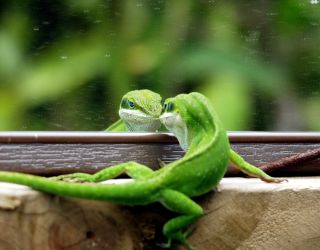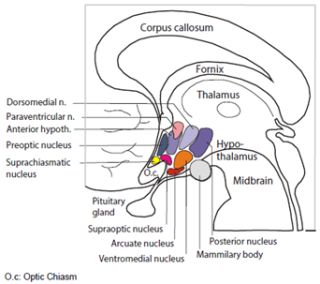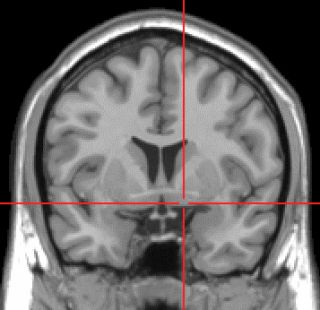Anger
What Fruit Flies Can Tell Us About Our Own Aggression
Learning how the brain controls aggression may help us control our impulses.
Posted January 26, 2024 Reviewed by Tyler Woods
Key points
- Aggression is an innate behavior wired into the animal brain.
- There is tremendous variation in how animals express aggression.
- Persistent aggression has been linked to specific cell types in the lowly fruit fly.

Aggression is a complex behavior, one that can be the source of concern in human society but also one that is essential for the survival of our species. We use aggression in our interactions with other humans in very much the same way that other animals use it. It is useful in obtaining access to resources we need, like food or access to a mate, and for defending both when there is competition for these resources.
There are some basic similarities in both the neurobiological circuitry mediating aggression in the human brain and in the brains of other non-human animals. The fact that both circuitry and neurochemistry are so similar is even more interesting given the sometimes very different ways aggression is expressed across species. Aggression in humans can be motivated by more than the possibility of losing access to resources. Humans react aggressively when they feel fear, when they’re overwhelmed by the circumstances they find themselves in, when they feel they’re unable to control things, when they’re disorientated, frustrated, or even for pleasure. Humans also fight both physically and verbally. Aggression in non-human animals is expressed only physically, through biting, chasing, and wrestling. So, the same neural structures seem to be involved despite the very different behaviors that are expressed. This supports the idea that aggression is an innate behavior in animals, both human and non-human.

Neural components of aggression
A number of researchers have suggested that aggressive behaviors are “emergent properties” of a complex system in the brain called the social behavior network. An emergent property is one that is produced by interaction between the component parts of a circuit or a system rather than the function of the individual parts that make up that network. In mammals, the social behavior network mediates not only aggression, but also sexual behavior, communication, social recognition, bonding between individuals, parental behavior, and our responses to social stressors (Goodson, 2005).
There are six brain regions, all part of the social behavior network, thought to play a role in aggression. Three regions are found in the hypothalamus (the Preoptic Area, and the Anterior and Ventromedial Nuclei), the periaqueductal gray, or PAG, which, as the name suggests, surrounds the central aqueduct connecting the third and fourth ventricles, the lateral septum and the medial amygdala. Stimulation of these regions produces aggression. Damage to these areas tends to decrease aggressive behaviors (Nelson and Trainor, 2007).
In 2021, Zhu, et al., proposed another region of the brain called the Substantia Innominata, or SI (from the Latin for unnamed substance) be added to the circuitry needed to produce a general aggressive response. The SI is often classified as a part of the extended amygdala. These researchers found that these cells were very active in inter-male aggression, and that the firing rate from these cells started to rise before the aggressive attack, at the first behavioral indication that an aggressive response might take place. They also found that the response of these cells was correlated with the degree of threat or how much a stimulus provoked an attack.

Persistent aggression
We all use aggression, but there is also tremendous variability in how strongly we express our aggressive instincts, how often we are willing to act aggressively, and who we choose to target with our aggression (Guthman and Falkner, 2022). Some individuals, both human and non-human, seem to engage in persistent and unchecked aggression. Aggression that persists after the initiating circumstances have disappeared can create serious problems both for the person being aggressive, the person being aggressed against, and for society as a whole (Nelson and Trainor, 2007).
In an effort to better understand persistent behavioral states in general, and persistent aggression in particular, Chu, et al. (2023) examined the genetics of aggression using yet another animal model, this time the fruit fly. They had previously shown that individual activation of either of two specific cell types (called aIPg and pC1d cells) in the fruit fly would elicit aggressive behaviors like shoving, wing threat, and head butting.
In their 2022 study, they wanted to model persistent aggression in female fruit flies. They found that persistent aggression (lasting ten minutes) required stimulation of aIPg neurons. Stimulation of two other cell types, pCId cells and pC1e cells simultaneously would also elicit persistent aggression, but stimulation of these two cell types individually elicited aggression time-locked to the stimulation. This suggests that different populations of neurons control persistent and time-locked aggressive behaviors.
Neither aIPg neurons which, when stimulated, elicited persistent aggression, nor pC1d/pC1e cells, which elicited only time-locked aggression, showed persistent neural activity. This leaves the question of how persistent behavioral expression of aggression is being sustained. The authors suggest investigation of downstream targets of these neurons to answer this question.
References
Chiu H., Robie, A.A., Branson, K.M., Vippa, T., Epstein, S., Rubin, G.M., Anderson, D.J., and Schretter, C.E. (2023). Cell type-specific contributions to a persistent aggressive internal state in female Drosophila. eLife 12: RP88598 https://doi.org/10.7554/eLife.88598.1
Goodson, J.L (2005). The vertebrate social behavior network: Evolutionary themes and variations. Hormones and Behavior, 48(1), 11 – 22.
Guthman, E.M., and Falkner, A.L. (2022). Neural mechanisms of persistent aggression. Current Opinion in Neurobiology, 73, 102526.
Nelson, R.J., and Trainor, B.C., (2007). Neural mechanisms of aggression, Nature Reviews Neuroscience, 8, 537 – 546.
Zhu, Z., Ma, Q., Miao, L., Yang, H., Pan, L., Li, K., Zeng, L.-H., Zhang, X., Wu, J., Hao, S., Lin, S., Ma, X., 1 Mai, W., Feng, X., Hao, Y., Sun, L., Duan, S., and Yu1, Y.-Q. (2021). A substantia innominate-midbrain circuit controls a general aggressive response. Neuron, 109, 1540–1553.


